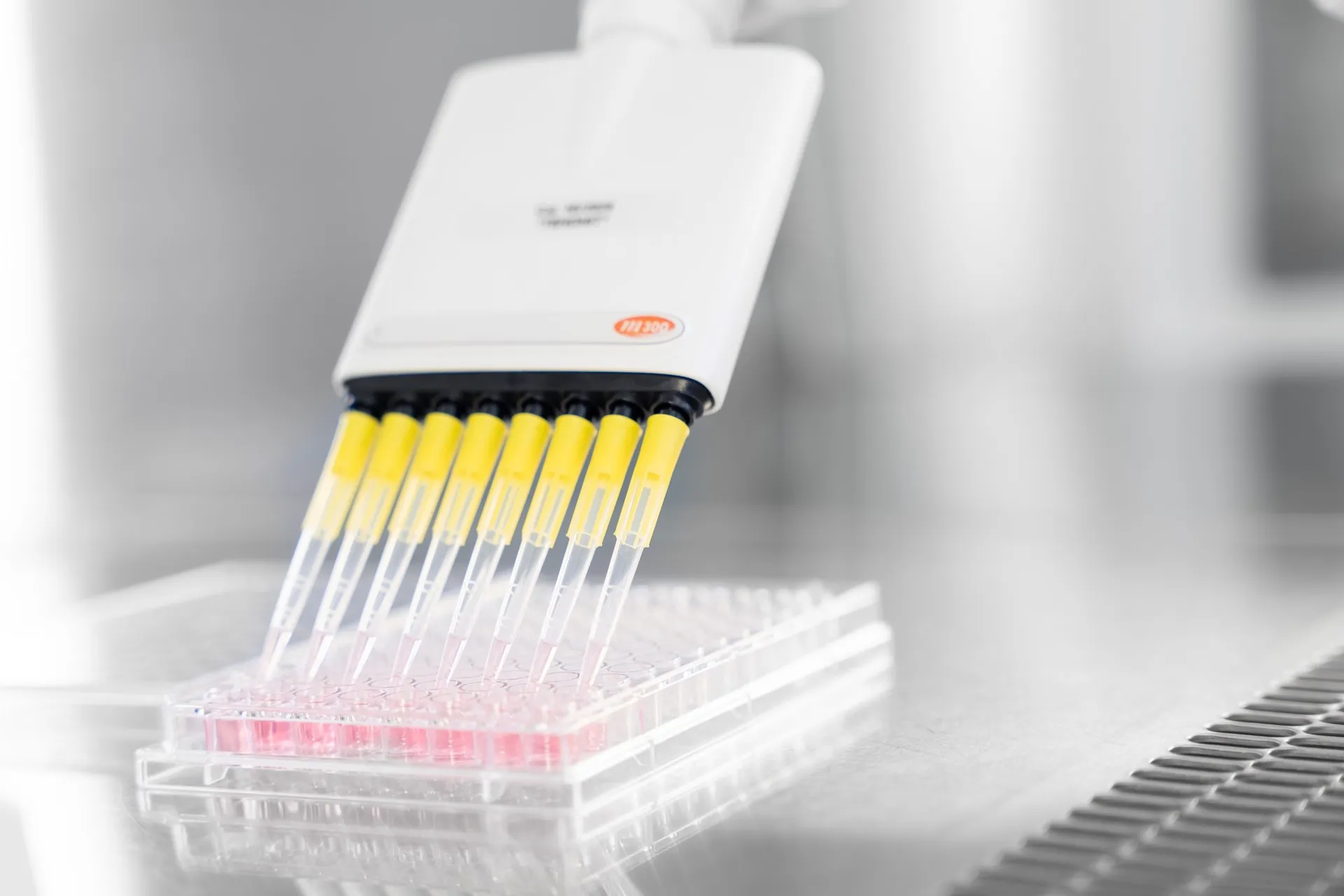ARVO 2025 presentation: Human cornea-on-a-chip – opportunities and challenges


The primary human corneal epithelial cells (pHCEC) and transformed cell line (HCE-T) were seeded on AKITA® Plate96-Single 1 µm pore size microfluidic platform. After confluent cell layer was formed in three days in vitro (DIV3), an air-liquid interface in an open-top chamber was established for an additional four days (DIV7). Permeability experiments were performed for five fluorescent reference compounds, FITC-dextran (FD) 70 kDa, FD 4 kDa (FD4), 6-carboxyfluorescein (6-CF), Rhodamine 123 (Rho 123) and Rhodamine B (Rho B) from apical to basolateral (AB) direction, i.e. corneal surface to anterior chamber. Rho 123, a substrate for active transport processes, was tested from basolateral to apical (BA) direction.
HCE-T cells created 7- to 10-fold lower apparent permeability coefficient (Papp) values compared to pHCEC cells with low permeability reference compounds. The Papp values for high permeability compound, Rho B, was 1.4-fold higher in pHCEC. Papp values across HCE-T cells are in line with rabbit corneal and in vitro values reported in literature previously. The active transport of Rho 123 was not detected in efflux ratio, Papp(BA)/Papp(AB). However, Rho 123 had much lower mass balance (%) in BA direction compared to AB direction (pHCEC 75% vs. 89% and HCE-T 66% vs. 104%) which may indicate accumulation of Rho 123 into cells but lack of active transporter in the apical side.
HCE-T cells formed 7- to 10-fold tighter epithelial barrier in cornea-on-a-chip microfluidic platform compared to pHCEC cells. Thus, HCE-T cells are more suitable for cornea-on-a-chip model for drug permeability testing. Further studies are needed to check expression of active transporters and their functionality in cornea-on-a-chip model.
Dovilė Litvinavičiūtė, Olga Vergun, Tuan H. Nguyen, Sébastien Mosser, and Jenni J. Hakkarainen
Check out our latest news and activities
All News
Copyright: Experimentica Ltd. 2025